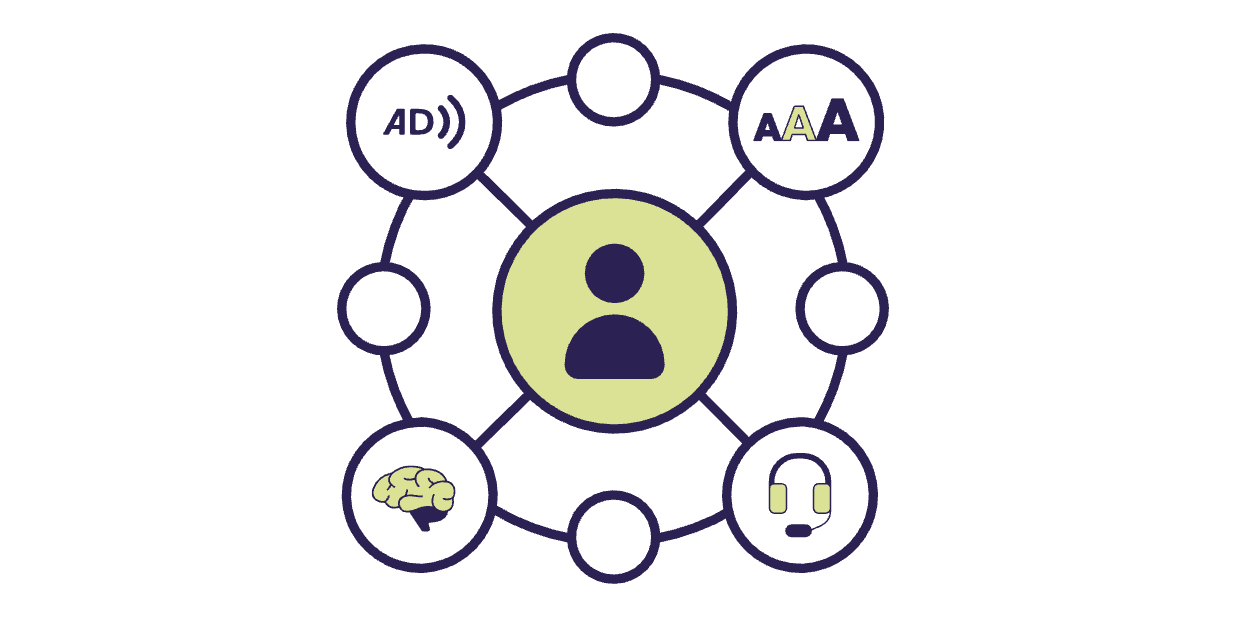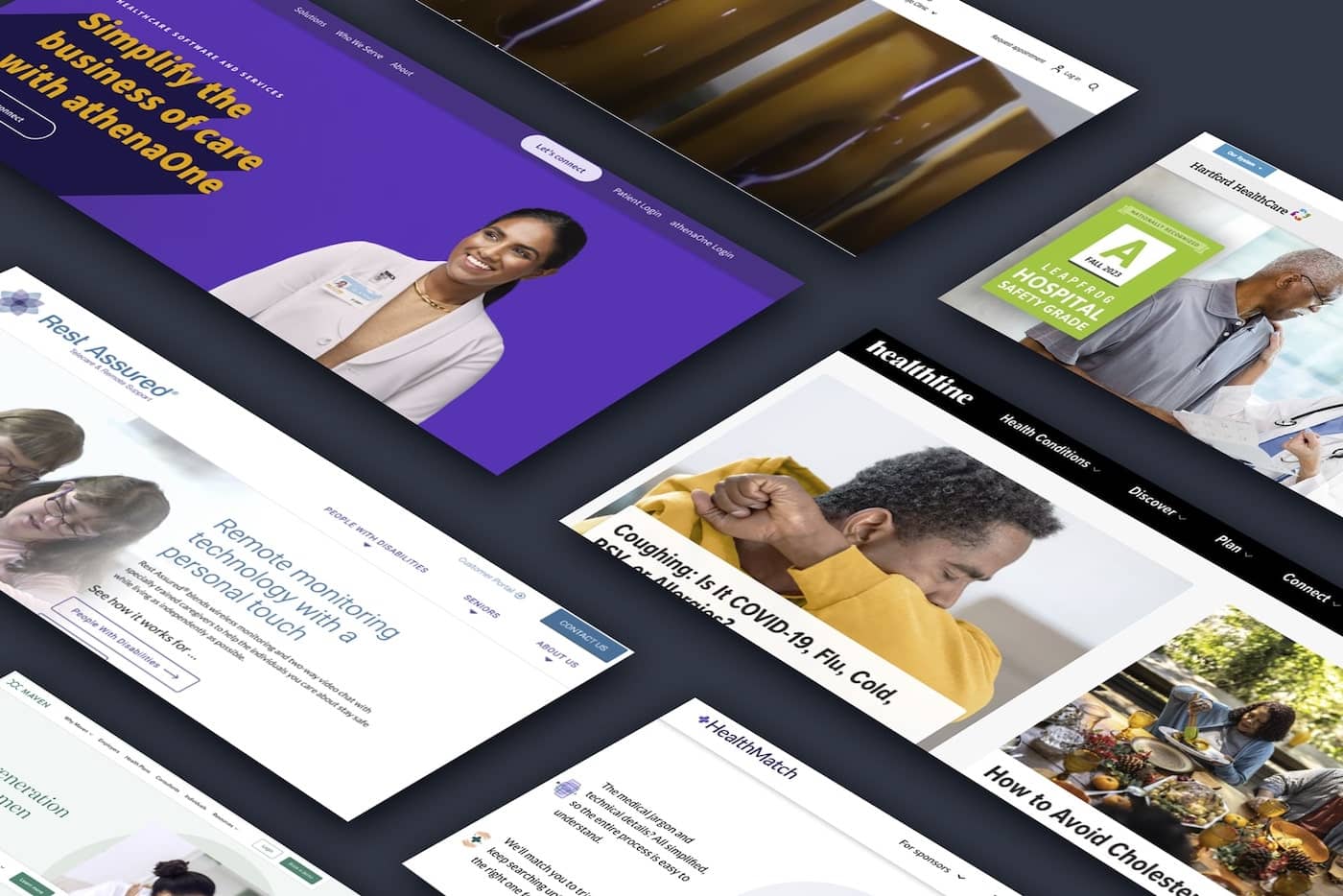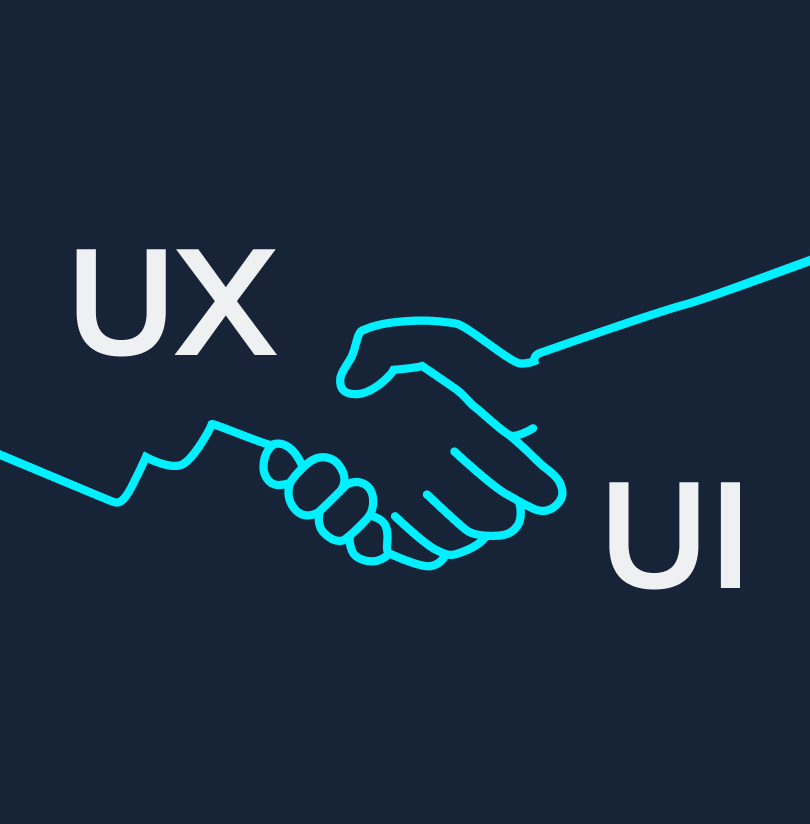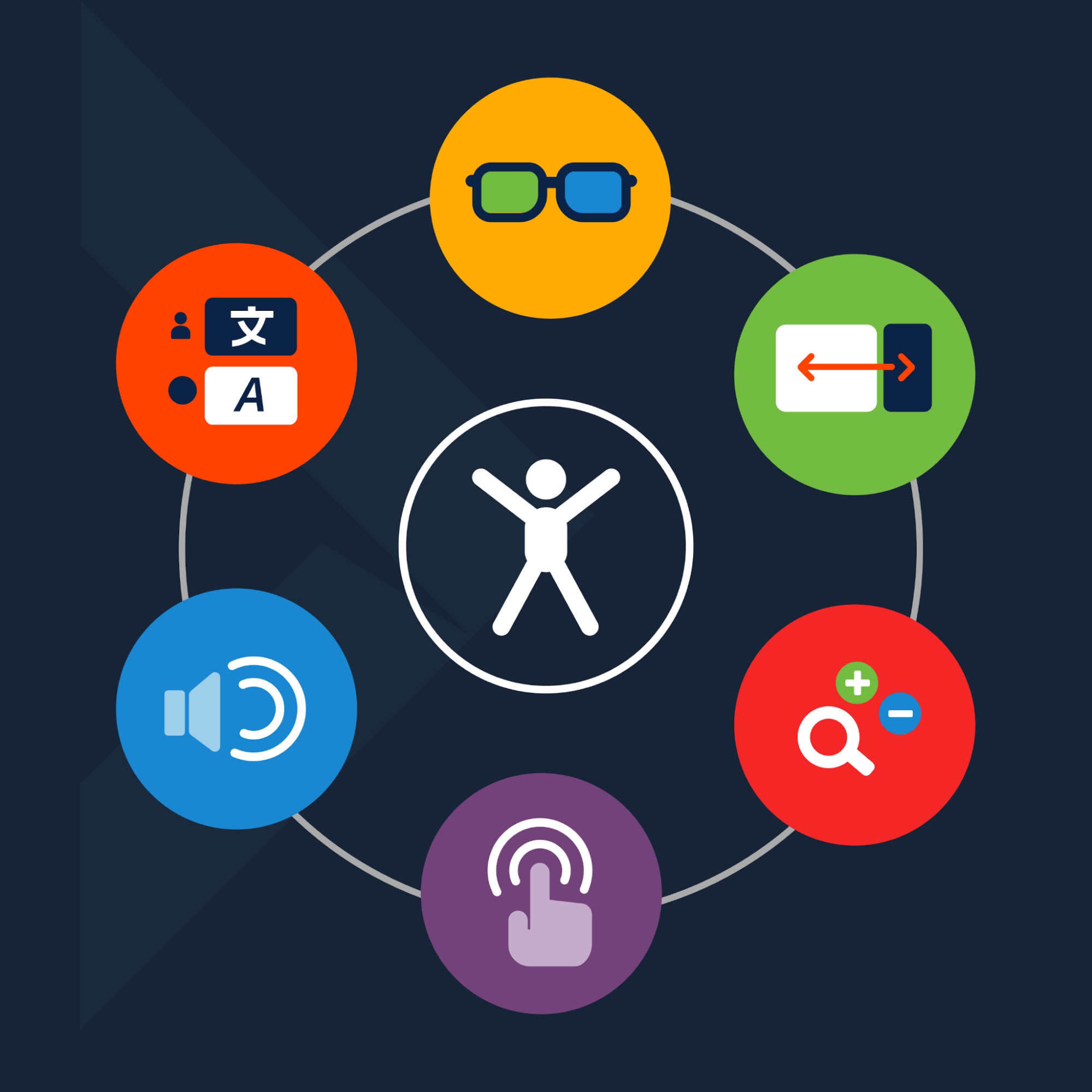

Accessibility vs. Compliance
Viewing digital accessibility as merely a legal requirement misses the business opportunities created by accessible websites and apps.
The compliance mindset asks: "What's the least we can do?"
The strategic mindset asks: "How can inclusive design improve our entire business?"
Accessibility is more than checking boxes, adding alt text here, and keyboard navigation there. It means designing experiences that work for everyone, including the 1.3 billion people with disabilities worldwide.
Accessible design does more than avoid lawsuits. [Stats]
- It expands your market by 20-plus percent
- Double customer loyalty
- Boosts Google rankings
- Taps into a $13 trillion market
This isn't theoretical. Accessible websites consistently perform better across key metrics.
- Users stick around longer
- Convert more often
- Recommend these experiences to others.
Companies that get ahead of this curve establish themselves as leaders in a market that increasingly rewards inclusion.
1.3 billion. That's the number of people locked out worldwide or struggling with digital experiences. And that's $13 trillion (yes, trillion with a T) in disposable income walking away from businesses that won't open their digital doors.
While competitors fumble with mere compliance, treating accessibility like a legal chore, you can dominate an underserved market. Most companies add alt text and keyboard shortcuts, then call it done. They're playing defense, trying not to get sued. It’s a thing. Ask Domino's Pizza.
Accessibility isn't a cost drain. It's a competitive moat.
What Happens When You Go All-In - Being Proactive
- Market expansion: 20%+ bigger addressable market overnight. Double the customer loyalty rates.
- Technical wins: Higher Google rankings. Faster load times. Better mobile experience.
- Psychological edge: Users don't think "this works." They think, "this company cares about people like me." That emotional connection creates evangelists.
Your Strategic Move
Don't just comply. Make accessibility your brand differentiator. Lead with inclusion. Showcase accessibility as a premium feature. Partner with disability organizations.
- Audit and map opportunities.
- Fix the biggest barriers.
- Launch accessibility as a brand story.
The Bottom Line
Competitors ask: "How little compliance can we get away with?"
You should ask: "How can accessibility redefine our market position?"
The $13 trillion market is waiting. The competitive advantage is unclaimed.
Accessibility and Compliance - A Deep Dive
If you think digital accessibility is just about avoiding lawsuits, you’re missing the point—and the opportunity. Accessibility opens doors to new audiences and a stronger brand.
Think of compliance as the floor, the lowest level you must meet to avoid legal trouble, and proactive accessibility as the ceiling, the highest goal where your digital experiences are inclusive by design.
Many organizations treat accessibility as a checklist of rules to follow.
In reality, website accessibility is not just about legal compliance. It’s about creating equitable, user-friendly experiences for everyone. Simply following the letter of the law might keep lawsuits at bay, but it can still leave many users frustrated or unable to use your site. That’s bad for business.
Accessibility means going beyond the ADA compliance “floor” and aiming for the “ceiling” of innovation and inclusivity.
This article explores why minimal legal compliance is not the same as an inclusive website and how businesses, especially B2B companies, can shift from a compliance mindset to an accessibility-first strategy that adds real business value.
Numbers Reveal a Stark Reality

Understanding the landscape is essential for organizations wanting legal cover, to reach a wider audience, and to deliver a better user experience.
- Over 1.3 billion people worldwide (15–20% of the population) experience some form of disability. This group and their families represent about $13 trillion in annual spending power
(weforum.org). - An estimated 96% of the world’s top one million websites are not fully accessible to people with disabilities (accessiblyapp.com). In fact, a 2024 analysis found that 88% of websites had significant accessibility issues, and only about 4% were fully compliant with modern standards (accessibilitychecker.org).
- In 2023, over 4,600 web accessibility lawsuits were filed in the U.S. under the ADA, a 14% increase from the previous year. The vast majority (97%) of these lawsuits target business websites (especially e-commerce), indicating that no industry is immune (adasitecompliance.com).
- According to industry surveys, 85% of organizations now view digital accessibility as a competitive advantage, not just a compliance task (pixelplex.io). Nearly three-quarters of companies have adopted formal accessibility policies, recognizing the business benefits of inclusive design.
Each of these numbers tells a story: the massive audience, the massive gap in accessible digital content, the rising legal risks, and the growing awareness that accessible design is good for business.
These statistics don’t represent older users with hearing or vision loss or more limited mobility. They benefit from the superior user experience that comes from an accessible website or app.
With this context in mind, let’s explore accessibility vs. compliance and what it means for your organization.
Free Guide: Digital Accessibility Checklist
Make your website and digital content more accessible. Download and follow this checklist to begin auditing your website for digital accessibility.
Accessibility Laws and Guidelines: The Basics
Digital accessibility isn't just good practice. It's increasingly a legal requirement.
As more of our daily activities move online, governments worldwide have established laws to ensure that websites, apps, and digital services are usable by everyone, including people with disabilities.
Understanding the legal landscape
In many regions, accessibility compliance is driven by laws and regulations, the “rules of the road” for digital accessibility.
The United States’ primary law is the Americans with Disabilities Act (ADA), which prohibits disability-based discrimination. Titles II and III of the ADA have been interpreted by courts to apply to websites and apps, even though the ADA itself doesn’t explicitly mention websites.
The Department of Justice has indicated that ADA requirements do cover web content, and numerous court cases, like the infamous Domino’s Pizza case, have established legal precedent that websites must be accessible.
However, the ADA doesn’t spell out technical standards for web accessibility, which is where the Web Content Accessibility Guidelines (WCAG) come in.
Understanding the legal landscape
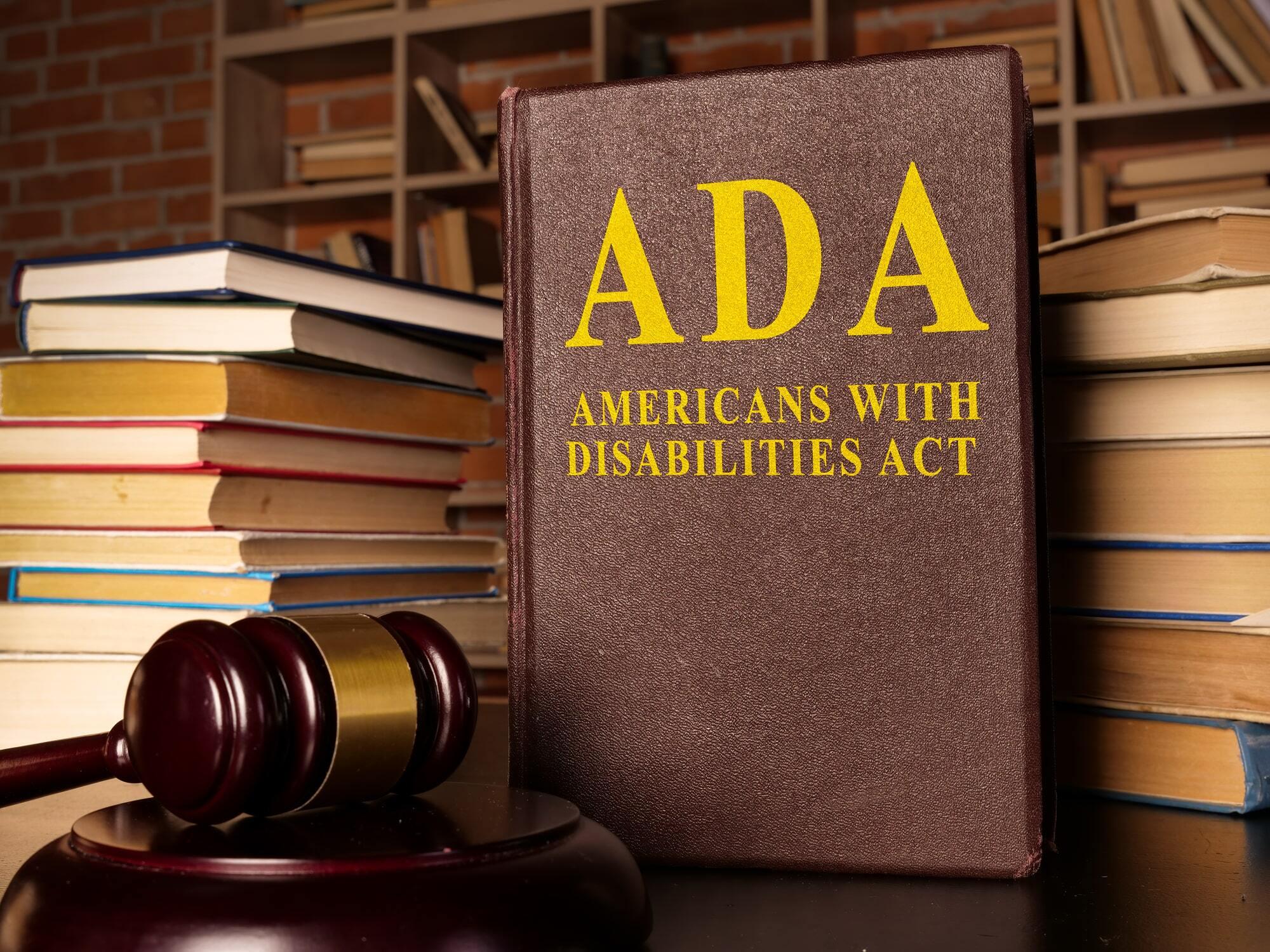 In many regions, accessibility compliance is driven by laws and regulations, the “rules of the road” for digital accessibility.
In many regions, accessibility compliance is driven by laws and regulations, the “rules of the road” for digital accessibility.
The United States’ primary law is the Americans with Disabilities Act (ADA), which prohibits disability-based discrimination.
Titles II and III of the ADA have been interpreted by courts to apply to websites and apps, even though the ADA itself doesn’t explicitly mention websites.
The Department of Justice has indicated that ADA requirements do cover web content, and numerous court cases, like the infamous Domino’s Pizza case, have established legal precedent that websites must be accessible.
However, the ADA doesn’t spell out technical standards for web accessibility, which is where the Web Content Accessibility Guidelines (WCAG) come in.
WCAG and the role of the W3C
The World Wide Web Consortium (W3C), an international web standards body, publishes the WCAG guidelines. WCAG, short for Web Content Accessibility Guidelines, provides detailed web accessibility standards and best practices, like providing text alternatives for images, keyboard navigability, sufficient color contrast, etc.
These guidelines are widely accepted as the baseline for making web content accessible. Many laws worldwide either directly reference WCAG or use similar criteria.
- In the U.S., federal agencies and organizations receiving federal funds must comply with Section 508 of the Rehabilitation Act, which currently requires adherence to WCAG 2.0 AA standards for web and software. Many state and local governments follow similar standards.
- The ADA (for private businesses) doesn’t officially name WCAG, but courts often judge ADA compliance based on it. Practically speaking, a site that meets WCAG 2.1 AA is considered in compliance with the ADA in most cases, whereas failing WCAG guidelines puts a company at high risk of lawsuits.
- In Canada, the Accessibility for Ontarians with Disabilities Act (AODA) requires large private sector organizations and government sites in Ontario to meet WCAG 2.0 AA. This has been phased in over the years. New content had to meet Level A by 2014, and by January 1, 2021, all public- and private-sector websites in Ontario needed to be WCAG 2.0 AA compliant. Other provinces have similar regulations, and federally, the Accessible Canada Act is moving toward WCAG-based standards for national agencies and businesses.
- In the European Union, the EU Web Accessibility Directive requires public-sector websites and mobile apps to conform to EN 301 549, which is based on WCAG 2.1 AA. Even more sweeping, the European Accessibility Act (EAA) was adopted to cover many private-sector digital products and services by June 2025.
- EU member states are aligning their laws with the EAA, meaning that by 2025, many B2C and B2B digital offerings in Europe must be accessible.
- Other countries have their own laws: for example, the UK’s Equality Act and associated regulations mandate accessible websites (especially for public services), Australia’s Disability Discrimination Act has been interpreted to cover web content, and many others are following the lead of WCAG.
In short, wherever you do business, the chances are that there is either a law in place or coming soon that expects your digital content to be accessible.
Compliance vs. Best Practice

It’s important to note that WCAG is a guideline, not a law.
In the U.S., there is still no single codified legal standard for private websites, but that doesn't mean "no rules." Instead, businesses are held to a reasonableness standard under ADA: if your site isn't accessible to people with disabilities, you can be found violating the ADA's general anti-discrimination provisions.
The safest approach is to treat WCAG's success criteria as your compliance checklist. Meeting the latest WCAG guidelines is widely considered the floor of accessibility. It addresses the most common barriers. But as we'll explore, just checking those boxes doesn't automatically mean your site is truly usable or that you're leveraging accessibility to its full potential.
How the Two Approaches Differ
How you approach accessibility says everything about your organization’s priorities. Whether you settle for minimal compliance or aim for true inclusion will ripple through every aspect of your organization, from user experience to brand loyalty and beyond.
Compliance |
Accessibility |
Objective
Minimal Compliance Avoid legal risks.
The focus is on meeting the letter of the law to prevent lawsuits or fines.
Proactive Accessibility
Enhance user experience for all. The focus is on inclusion, usability, and adding value for diverse users.
Approach
Reactive and checklist-driven. Often addressed as a one-time project after a problem arises, like a lawsuit or complaint.
Integrated and continuous. Accessibility is embedded in design, development, and content creation from the start.
Scope
Fix only the issues necessary to pass audits or meet specific regulations.
Broaden the scope to go beyond guidelines.
Legal Risk
It reduces risk to a basic acceptable level, but may leave some gaps. You might be technically compliant, yet still face user complaints or edge-case legal issues if something is missed.
Exceeding standards significantly lowers legal risk long-term. Exceeding standards makes your site less likely to have accessibility issues, making it a more challenging target for lawsuits.
User Experience (UX)
It meets minimum accessibility, but UX may still be mediocre. For example, a site might technically comply but still be awkward for keyboard navigation or not optimized for screen readers beyond basic tagging.
Delivers superior UX for everyone – smoother navigation, clearer content structure, and features that help not just disabled users but all users.
Market Reach
It may not actively improve reach. You're avoiding user exclusion but not necessarily courting them. A compliant site might feel alienating if it's just patched to satisfy rules.
Expand your market and audience. An inclusive website welcomes the estimated 1 in 5 people who have disabilities, as well as older users and those on assistive tech.
SEO Impact
Basic compliance might help SEO in some areas, for example, adding alt text can improve image SEO. However, if approached grudgingly, you might only do the bare minimum, missing broader SEO gains.
Comprehensive accessibility improvements often boost SEO. Clean semantic HTML, fast load times, and proper headings and labels are all good for SEO and accessibility.
Brand Value
It shows that you meet obligations, but doesn’t particularly enhance your brand. Companies rarely publicize compliance alone; it’s expected, not applauded.
Strengthens your brand’s reputation. Companies known for inclusive, accessible design are seen as ethical, caring, and innovative.
Innovation
Tends to stick to what the law explicitly requires, which can lag behind technology. Little incentive to innovate; in fact, teams might fear doing anything not on the compliance checklist.
Drives innovation and agility. When you prioritize accessibility, you often adopt modern best practices because new tech makes things more accessible. A proactive mindset encourages finding creative solutions that improve UX for all users, disabled or not.
Ready to move beyond compliance?
Let’s build a truly inclusive digital experience together.
The Business Case for Basic Compliance (Doing the Minimum)
Why would any organization settle for just the minimum? The reality is that some companies, especially those unfamiliar with accessibility, start here. The business case for minimal compliance typically centers on risk avoidance and legal obligation.
- Avoiding lawsuits and fines: The most obvious motivator is to avoid costly litigation that can come from ignoring accessibility. U.S. businesses have seen thousands of ADA web lawsuits in recent years, over 4,600 in 2023 alone, and many more receive demand letters seeking settlements. By addressing at least the known issues, the ones an automated scanner or a lawyer’s letter flagged, a company can reduce the risk of being targeted. In e-commerce, where 82% of the top 500 online retailers have been sued over accessibility, doing nothing is not an option.
- Meeting government or partner requirements: Sometimes, compliance is a prerequisite for doing business. For example, to win a government contract or to partner with certain enterprises, you may need to attest to accessibility compliance, often via a Voluntary Product Accessibility Template (VPAT) or similar documentation. If you treat this as a checkbox exercise, you might aim to barely meet the required standard, such as complying with WCAG 2.0 AA, because a law or client contract says so. The business case here is: "We need to comply to sell our product or avoid losing a deal."
- Lower initial cost (in theory): On the surface, doing what’s legally necessary seems cheaper and faster than investing in full accessibility. Some organizations justify minimal compliance by saying, “We don’t serve a public audience” or “We’ll address more later; for now, this is enough to stay out of trouble.” They focus on the short-term cost of improvements, not the long-term ROI.
Example: The Bare Minimum Approach
Imagine a corporate website that gets a complaint because its PDF brochures aren’t screen-reader friendly. A compliance-focused response would be to fix those PDFs and add an accessibility statement to the footer saying, “We strive to comply with ADA/WCAG.” The site might add an accessibility toolbar plugin to give the impression of accessibility, even if such plugins don’t fix underlying issues. Companies may choose to remove the PDF files. The company stops there, feeling it has “handled” accessibility because the immediate problem was “resolved.” They achieve nominal compliance. The specific violation is gone, and they hope that’s enough.
The Downside of Just Compliance
While minimal compliance addresses immediate pain points, it often leaves many accessibility barriers in place. Users with disabilities might still encounter confusing navigation, hard-to-use forms, or media without captions, even if those things technically pass a basic check.
Compliance alone is a defensive move. It keeps you from drowning, but it won’t help you swim.
The Business Case for Proactive Accessibility (Going Above and Beyond)
Now, let’s talk about the upside. Why go beyond the minimum?
Investing in proactive, inclusive digital accessibility can unlock significant business value. Here are key benefits and examples that make a strong business case for aiming higher:
- Reaching a larger audience and unlocking new markets: By designing for accessibility, you make your website usable by the roughly 1 in 5 people who have disabilities, as well as millions of others who benefit from more accessible design. This isn’t a niche audience. In the U.S. alone, an estimated 26% of adults have some disability.
- Enhanced user experience for everyone: Many accessibility best practices directly translate into a better overall user experience. Clear navigation structure, descriptive link text, readable fonts, good color contrast, and keyboard-friendly controls make the site smoother for all users, not just those with disabilities. An inclusive design approach often uncovers usability issues that benefit other users once fixed.
- SEO gains and better discoverability: Proactive accessibility, SEO (Search Engine Optimization), and now Answer Engine Optimization (AEO) go hand in hand. Search engines prefer fast, well-structured, and user-friendly websites, which is precisely what accessibility improvements tend to do. For example, adding alt text descriptions to images makes them understandable to blind users. And, it gives search engines valuable information about the image, potentially boosting your visibility in image search results. Using proper heading tags (<h1>, <h2>, ...) to structure your content helps screen reader users navigate and helps Google understand your page content hierarchy, improving snippet generation and relevance. Accessible websites often achieve higher Google Lighthouse scores not just in Accessibility but in SEO and Best Practices, too.
- Reduced maintenance and tech debt: When you build with accessibility in mind, you tend to write cleaner code and content, which pays off in easier maintenance. Websites that follow standards, like using native HTML elements properly, are typically more interoperable across browsers and devices and require fewer hacks or re-dos later.
- Innovation and brand leadership: Companies that champion accessibility position themselves as innovators and leaders in their industry. For example, a software company that ensures its B2B SaaS platform is fully accessible might win press coverage or industry awards, distinguishing it from competitors. Internally, a culture of accessibility fosters creative problem-solving. Teams might experiment with new technologies like voice recognition, AI image descriptions, or other assistive tech integrations, which can lead to features that all users love. A classic example is voice-controlled interfaces like Siri and Alexa. These services, originally conceived to assist users who couldn't use traditional input, have become mainstream conveniences.
- Positive ROI and business outcomes: Proactive accessibility can drive higher conversion rates and customer satisfaction. If users can navigate your site more easily, they are more likely to complete goals, whether filling out a contact form, downloading a whitepaper, or completing a purchase. For example, one study noted that websites with an accessibility score of 75 or above (out of 100) tended to have higher revenue than those with lower scores. While correlation isn't causation, it stands to reason that a more accessible site loses fewer customers along the way.
Example: The Progressive Approach in Action
Consider a manufacturing firm that has an online complex B2B product catalog. Instead of adding alt text to product images to satisfy compliance, they undertake a full accessibility audit and redesign. They involve actual users with disabilities in testing. They discovered that adding an accessible PDF format for spec sheets helps blind users and makes those PDFs indexable by search engines, so their product specs appear in Google results more often. They also implement improved keyboard navigation for their product filters, making the site faster for power users without touching a mouse. Over time, they notice more downloads of spec sheets and fewer customer support queries about finding information – a sign that the user experience improvements are paying off.
The Bottom Line
Proactive accessibility is an investment that yields returns in expanded reach, customer loyalty, and often direct performance gains, leading to improved SEO and conversions. It transforms accessibility from a cost center into a competitive advantage. Companies that recognize this treat accessibility not just as “the right thing to do” (though it is) but also as a savvy business strategy.
Opportunities Across B2B Sectors
No matter your industry, embracing accessibility can open new doors. Here’s how proactive accessibility creates strategic opportunities in several B2B sectors.
Healthcare and Life Sciences
Patients, caregivers, and healthcare professionals of all abilities need to access information and digital tools.

A healthcare or pharmaceutical company that makes its websites and patient portals accessible is not only meeting regulations (like Section 508 for any government-related healthcare services or the Affordable Care Act mandates for federally funded health programs, but also improving patient care.
For example, accessible telehealth interfaces ensure that an elderly patient with low vision or a user with a motor disability can schedule appointments and consult with doctors online. This leads to better service outcomes and can be a selling point when healthcare providers consider new software or platforms. In B2B terms, if you develop health IT products or medical devices with digital interfaces, demonstrating WCAG compliance and usability can set you apart in a highly regulated market.
Moreover, healthcare organizations have a duty of care, and building inclusivity enhances their brand trust. Accessible health content, like clear, captioned instructional videos or readable online forms, can reduce errors and misunderstandings, which is critical in this industry.
Manufacturing and Industrial B2B

Manufacturing and industrial companies might assume accessibility isn't as necessary since they often target a niche professional audience. But, consider that many engineers, procurement officers, or facility managers using your site could have disabilities or benefit from a more accessible design.
For example, an engineer with color blindness trying to read a product schematic needs good contrast in any downloadable materials.
An older maintenance manager (nearing retirement) might appreciate larger text options or the ability to navigate your equipment catalog via keyboard.
Beyond the user experience, accessibility improvements often align with industrial B2B SEO benefits. Many manufacturing websites are rich in data sheets and specs, and making those accessible helps search engines index them, increasing your reach to potential buyers searching for specific technical info.
Chemical and Energy Sector

Chemical companies and those in energy or utilities often operate across international markets and serve broad user bases for documentation, like safety data sheets, product usage instructions, investor information, etc. Accessibility here can have safety implications.
An employee with dyslexia should be able to read hazard guidelines on your site easily, and a visually impaired community member should be able to access environmental reports or outage maps.
Being proactive in this sector demonstrates corporate responsibility, which matters because regulators and the public scrutinize these industries closely. On the B2B front, chemical suppliers who sell to manufacturers or labs might find that some clients, especially government or large corporate clients, now include digital accessibility in their vendor compliance checklists. Making your customer portals, spec databases, and reports accessible can smooth B2B relationships and avoid any friction in the sales or support process.
Finance and Professional Services

In finance, web accessibility is not just good practice. It’s often required by law or regulatory guidance. For example, the ADA has been used to sue many banks, and the U.S. SEC has signaled expectations for accessible investor websites.
But beyond avoiding lawsuits, think of the client experience. A business banking portal or an insurance brokerage platform that is easy to use for a client with low vision or a trader with a motor impairment means that the client can do their work more efficiently.
If you're selling B2B financial software or services, saying, "Our platform is fully accessible and meets WCAG guidelines," can be a unique value proposition as companies increasingly include accessibility in RFPs.
Across all these sectors, a common thread is emerging: accessibility is becoming a mark of a forward-thinking, globally aware business. B2B buyers have choices. If your company demonstrates inclusive practices, it can tip the scales in your favor. Furthermore, many industries have their own specific accessibility needs or regulations.
For instance, telecommunications firms must consider accessibility for communication tools per the FCC rules. Education technology providers have obligations under laws like the ADA/Section 504 for schools. Proactively addressing those needs positions you as a partner who “gets it” and can be trusted to meet diverse user requirements.
Beyond Compliance: Hiring, Contracts, and Market Success
Up to this point, we've discussed accessibility for users and customers. Proactive accessibility has internal and market-facing benefits. A commitment to accessibility can positively impact hiring, B2B contracts, and overall market success.
- Attracting and retaining talent: Embracing accessibility makes your company more attractive to prospective employees, not just customers. Talented individuals with disabilities represent a significant portion of the workforce, especially in technology, marketing, and other fields relevant to web development. Suppose your digital properties, like a careers page or internal tools, are accessible. In that case, you're more likely to attract job candidates with disabilities, and their skills can be a tremendous asset.
- Winning contracts and clients: As highlighted earlier, being accessible can help you land business. Large companies and government agencies increasingly include accessibility compliance as a line item in RFPs and vendor assessments. If a potential client asks, “Is your product/website accessible?” and your answer is a confident yes, perhaps backed by documentation or third-party certifications, you clear a hurdle that might trip a competitor.
- Market perception and brand differentiation: In crowded B2B markets, little things set you apart. Accessibility can be one of those differentiators. The word can spread if your website is an effortlessly usable experience for everyone, the word can spread. Customers might refer others to you because "their site was easy to navigate and had all the info in accessible formats." Especially within industries where accessibility is not yet the norm, being one of the first to champion it gives you a PR advantage.
- Resilience to legal and social changes: Markets change, and so do laws and customer expectations. Establishing an accessibility mindset prepares your company for the future. If or when accessibility regulations become stricter, you won't be scrambling to comply because you're two steps ahead. Similarly, social awareness of inclusion is only growing. Companies are frequently called out on social media for shortcomings. Having an accessible site turns that potential criticism into a strength. You can proudly say you've ensured your digital front door is open to all.
Making accessibility a strategic priority creates a virtuous cycle. It helps you hire the best people, serve the widest customer base, win more deals, and protect and enhance your brand. It moves accessibility from a mere compliance task to a value-adding asset for your business.
Global Accessibility Standards and Trends
Digital accessibility is fast-evolving. And being proactive means keeping an eye on international standards and emerging best practices.
Overview of Global Developments
 International laws and updates: Canada’s AODA initially referenced WCAG 2.0, but will eventually align with newer WCAG versions. The EU’s new Accessibility Act will likely compel companies to adopt WCAG 2.1 or higher as soon as this year.. In the U.S., the Department of Justice has signaled an intention to eventually issue clearer regulations for ADA compliance in the web context. Global companies should track laws in all markets where they operate. For example, if you have users in China or Japan, note that these countries have their own accessibility standards. Australia has updated guidelines as well. Being proactive means you design to the most stringent standard so that you’re likely to meet whatever local law applies.
International laws and updates: Canada’s AODA initially referenced WCAG 2.0, but will eventually align with newer WCAG versions. The EU’s new Accessibility Act will likely compel companies to adopt WCAG 2.1 or higher as soon as this year.. In the U.S., the Department of Justice has signaled an intention to eventually issue clearer regulations for ADA compliance in the web context. Global companies should track laws in all markets where they operate. For example, if you have users in China or Japan, note that these countries have their own accessibility standards. Australia has updated guidelines as well. Being proactive means you design to the most stringent standard so that you’re likely to meet whatever local law applies.- WCAG 2.2 and WCAG 3.0: The W3C continues to refine guidelines. WCAG 2.2 introduces new success criteria for accessible authentication, focus appearance, etc. WCAG 3.0 is a more radical future framework addressing a broader range of disabilities and user needs. Forward-looking organizations are already considering these upcoming standards in their roadmap. By following the discussions in the accessibility community, you can anticipate new requirements.
- Assistive technology advancements: On the proactive side, monitoring technology can reveal opportunities. Improvements in voice assistants, screen readers, Braille displays, and eye-tracking software mean new ways people will interact with your digital products. Ensuring compatibility, for example, making sure your mobile app labels all icons so iPhone's VoiceOver can announce them correctly, will broaden your reach, as will AI-driven accessibility tools, like AI captioning services, image description generators, etc. While these shouldn't replace human-inclusive design or content production, they can augment your efforts. Being proactive might mean experimenting with an AI tool that provides alt text suggestions to your content team.
- Design trends towards inclusivity: Inclusive design is the heart and soul of UX/UI. Features such as dark mode, reduced motion options, and responsive layouts that support touch, voice, and keyboard input are now standard practices. These approaches make digital experiences more comfortable and accessible for everyone.
(For more insights on emerging accessibility trends and regulations, you can read our article on Accessible Website Development Trends, which highlights the trajectory of private-sector requirements like the EAA and ongoing legal precedents.)
How to Get There
The advantages of going beyond compliance should be clear. So, how can your organization make that shift? It involves a combination of process changes, education, and smart use of tools.
- Start with an accessibility audit: You can’t fix what you don’t know is broken. Begin by evaluating where your website or application stands today. An internal audit will identify the areas of non-compliance with WCAG and, importantly, usability issues for people with disabilities. This audit should include automated testing and manual testing. Automated scanners, like axe DevTools, Wave, or Google Lighthouse, are a great starting point and will catch many errors. But don’t stop at automated tests. Automation typically catches only about 20–30% of possible issues. Many problems require human judgment to identify. For example, an automated tool might not know if your link text “Click here” is confusing out of context, or if your PDF download is accessible. Consider engaging accessibility experts or experienced users with disabilities to conduct manual testing, providing insight into real-world usage that no tool alone can give.
- Integrate accessibility into design and development: Shifting from a reactive to a proactive approach means baking accessibility into your processes. Educate your designers on accessible design principles before they create mockups. Ensure developers are trained in semantic HTML, ARIA (Accessible Rich Internet Applications) roles for custom components and proper use of labels and attributes. If you have a design system or component library, update it to include accessibility guidelines for each element. For instance, specifying that every modal dialog must trap focus and have an aria label.
- Training and building a culture: One-off training can raise awareness, but building an inclusive culture goes further. Regular workshops, lunch-and-learns, or inviting users with disabilities to share their experiences can keep accessibility top of mind. Encourage your team to follow accessibility thought leaders or join communities (the W3C's Web Accessibility Initiative resources, for example, or conferences like CSUN's accessibility track).
- Mind the limitations of software tools and overlays: There's a proliferation of so-called "quick fix" accessibility tools (AI-driven overlays, toolbar widgets that let users change colors or text size, etc.). Be cautious with these. While specific tools, like a font size toggle, might benefit some people, they do not make your site compliant alone. Relying solely on an overlay can give a false sense of security. Many overlays only address a few superficial issues and do not fix underlying problems in the code. Some may even introduce new problems or conflicts with assistive tech. Like so many solutions, it may just be if it sounds too good to be true.
- Iterate and involve users: Shifting to progressive accessibility is an ongoing process. After initial fixes or improvements, gather feedback. If possible, usability testing should be conducted with people with disabilities. Even a small round of testing can reveal issues you didn't anticipate. Perhaps your site is technically compliant, but a screen reader user finds the checkout process confusing due to the order of form fields, something you'd only know by observing real interactions. Incorporate feedback loops: add an accessibility feedback form or contact on your site so users can report difficulties.
- Policy and documentation: If you aim for comprehensive accessibility, you might produce an internal accessibility style guide or checklist that everyone follows. Document common patterns so that consistency is maintained as your site grows. Also, keep an eye on vendor software or third-party components on your site. If you embed a video player or use a third-party chat widget, ensure those components are accessible or have alternative methods. Your commitment to accessibility should extend to all parts of your digital ecosystem.
Aim for the Ceiling
The journey from mere compliance to true accessibility is transformative. What might begin as a legal checkbox can evolve into a strategic investment that pays dividends across your business. Rather than viewing accessibility improvements as costs to be minimized, leading organizations recognize them as value drivers, fueling better user engagement, reaching new customers, strengthening brand loyalty, and sparking innovation. From the start, the “floor vs. ceiling” analogy isn’t just a catchy phrase; it’s a reminder that settling for the floor keeps your potential low, whereas aiming for the ceiling pushes you to excel and differentiate.
Treating accessibility compliance as more than the end goal, you’ll avoid the pitfalls of non-compliance and reap the rewards of being a user-centric, forward-thinking business.
Achieving and maintaining WCAG accessibility isn’t a solo effort. It takes a dedicated team of designers, developers, UX and UI experts, and content specialists working together. Evolving requirements and regulations mean staying accessible is an ongoing challenge that demands expertise and coordination.
Contact Us. We’re Here to Help
FAQs
Accessibility is important because it ensures everyone can use your website or application. From a business perspective, this widens your potential customer base, improves your site’s usability for all users, and protects you from legal risks.
In the United States, the ADA requires that businesses provide equal access to services, which courts have interpreted to include websites. While the ADA doesn't list technical standards, most organizations aim to comply with the Web Content Accessibility Guidelines (WCAG) (currently version 2.1 Level AA) to be considered accessible. Laws like Section 508 for federal sites and various state laws also reference WCAG. Internationally, Canada's AODA and the EU's Accessibility Act similarly require meeting WCAG-based standards. In practice, to be safe, your website should follow WCAG 2.1 AA guidelines at a minimum. This will address common requirements like providing text alternatives for images, ensuring users can navigate via keyboard, labeling form fields, etc. It's wise to consult legal or accessibility experts for specifics, but adopting WCAG is the recognized path to compliance virtually everywhere.
To determine this, start with an accessibility audit. You can use free automated tools,like Google Lighthouse, Wave, or Axe, to scan your site for obvious issues. These tools will give you a report and even an accessibility score. You should also conduct manual testing: try navigating your site using only a keyboard (no mouse) to see if you can access all features; enable a screen reader (like NVDA or VoiceOver) and see if the content makes sense when read aloud. Ideally, have an expert or a user with a disability evaluate key user flows on your site.
Yes, absolutely. Accessible design and good SEO/user experience go hand in hand. Many accessibility best practices are also SEO best practices.
It breaks down into clear steps.
- Educate your team about what accessibility means.
- Audit your current site.
- Prioritize fixes, addressing critical issues like missing alt text, form labels, and keyboard traps first.
- Establish an accessibility champion or internal team.
- Consider producing an internal checklist or guide for designers, developers, and content editors.
- Integrate accessibility into your workflow.
- Seek out a partner or consultant if you need expertise and more hands-on help.
- Keep monitoring, solicit feedback from users, and update your practices as standards evolve.
